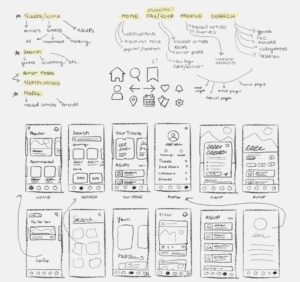
The digital era demands organizations to properly control who can access what resources at what time. The system of Identity and Access Management (IAM) functions as a solution. IAM operates as a security tool and serves as an essential system which defends sensitive data while granting appropriate access to personnel for their work tasks. The article explains IAM fundamentals together with its importance and demonstrates how organizations can achieve security-productivity equilibrium through its implementation.
What Is Identity and Access Management (IAM)?
Identity and Access Management (IAM) operates as an invisible system which determines who can access what resources at specific times and for particular reasons. Organizations use IAM as a combination of policies together with tools and processes to handle digital identities and protect their systems and data. The fundamental purpose of IAM is to allow authorized users (or devices) to access specific resources exactly as needed.
A well-established IAM framework both confirms user identities and controls access through role-based restrictions while maintaining complete records of login activities and permission modifications. IT teams can use this system to conduct periodic access level reviews which minimizes the occurrence of over-permissioned accounts. When properly implemented IAM establishes itself as a vital security component for organizations while serving as a fundamental requirement for regulatory compliance.
The core components of IAM
An IAM system is a complex structure composed of several interconnected components:
1. Identity Management (IdM)
Identity Management involves establishing and sustaining digital identities for humans and system entities, including employees and contractors, servers, and smart devices. The process includes user onboarding and role assignment, profile information storage (including names, job titles, and unique IDs), and account deactivation for inactive users.
The verification process of identities through authentication methods, including passwords, biometrics, and digital certificates, establishes trust before access begins.
2. Access Management
Access Management follows the successful identity verification of users to determine their subsequent actions. The system determines the actions which users can perform after authentication. Single Sign-On (SSO) systems and Multi-Factor Authentication (MFA) provide useful features for user convenience and security enhancement. User access decisions stem from predefined rules and roles that guarantee proper visibility of relevant information.
The identity management system supports OAuth and SAML standards which make it easier to integrate with external identity providers and third-party tools.
3. Access Governance and Monitoring
A proper governance system maintains Identity and Access Management (IAM) alignment with company policies and regulatory requirements. System administrators need to perform periodic checks of resource access permissions to verify their validity. The system performs essential entitlement reviews to reduce unwanted access privileges and provides detailed audit logs that provide complete visibility into login attempts and abnormal system behaviors. The obtained information serves two essential purposes: incident response and audit compliance demonstration.
4. Privileged Access Management (PAM)
All system accounts do not share the same level of importance. The security risk associated with privileged accounts becomes more critical when unauthorized parties gain access to them, since these accounts belong to IT administrators. The security feature of PAM tools includes secure credential storage and real-time session monitoring with just-in-time access authorization for sensitive accounts.
The implementation of PAM provides two benefits by restricting powerful accounts from unauthorized access and reducing damage during security breaches.
What is Identity Management (IdM)?
Identity Management (IdM) represents the complete digital identity management process for organizational personnel throughout their employment period. User account creation begins when someone joins and access updates happen when roles change and account deactivation occurs during employee departure.
Organizations assign unique digital identities to every user including employees and contractors and systems based on their roles or team affiliations or job responsibilities. The system restricts users from accessing information beyond their required work responsibilities.
Many organizations use Identity Governance and Administration (IGA) tools that link HR and IT systems to automate these processes. The automatic system updates user access permissions when employees experience role changes or department shifts or leave the organization which saves time and minimizes security risks.
Identity and Access Management Best Practices
Creating an IAM strategy goes beyond just having the right tools; it’s about ensuring that your people, processes, and technology are all aligned to protect your systems effectively. Here are some practices that can help keep your organization secure:
- Give only the access people need: Don’t give users more access than they need. This is called the “least privilege” rule. It helps reduce risk if someone’s account is hacked or misused. Review access regularly to make sure it still matches each person’s role.
- Always Use Multi-Factor Authentication (MFA): Passwords can be stolen. MFA adds an extra step, like a code sent to your phone or a fingerprint scan, to make it harder for attackers to get in. It’s one of the easiest ways to improve security.
- Use Single Sign-On (SSO) and Protect It: SSO lets users log into many apps with one password. It’s easier for everyone and reduces password problems. However, SSO gives access to many systems, so it must be protected with MFA and monitored for strange activity.
- Keep Identity Data Clean and Current: Identity records must be continuously updated to reflect changes in job roles, departments, or organizational structures. A trusted source of identity (such as the HR system) should feed authoritative data into the IAM system. Inactive or duplicate accounts must be regularly purged to ensure every user has a single, valid identity.
- Automate the Identity Lifecycle: Automate provisioning and de-provisioning processes wherever possible. IAM tools should trigger the appropriate actions based on onboarding or offboarding events instead of manually creating and removing accounts in each system when employees join or leave. Automation improves security and ensures new hires get timely access to the necessary tools.
- Conduct Regular Access Reviews and Independent Audits: Schedule recurring access recertification campaigns. Resource owners and managers should be prompted to validate who still needs access and revoke anything unnecessary. Periodic external audits can also help uncover policy violations or compliance gaps. Studies show that skipping access reviews leads to silent privilege creep over time.
- Monitor and Analyze Access Activity: Think of IAM as a core part of your security system, not just an IT tool. Ensure all login attempts, permission changes, and account activity are logged and reviewed. This helps spot unusual behavior, like someone trying to access data they shouldn’t or logins from unexpected locations. New tools like Identity Threat Detection and Response (ITDR) can help catch these threats early and protect your identity systems from targeted attacks.
- Implement Segregation of Duties (SoD): Design access policies that prevent conflicting roles from being assigned to a single user. For example, the same person shouldn’t be allowed to initiate and approve financial transactions. Modern IAM systems can automatically enforce SoD policies during role assignments to prevent risky combinations.
- Manage Privileged Accounts Separately: Accounts with high-level access, like system admins, can be a considerable security risk if misused. Use Privileged Access Management (PAM) tools to store passwords safely and track their use. These users should log in through a secure portal that records everything they do. If access is only needed briefly, give it temporarily and remove it immediately.
- Train People, Not Just Systems: Even the best IAM tools won’t work if people don’t use them properly. Teach employees why protecting their login info and requesting access correctly is essential. Also, train your IT and security teams to manage IAM tools effectively. A well-informed team helps build a strong security culture that makes IAM work better for everyone.
IAM Risks
The implementation of IAM systems provides numerous security and operational advantages yet they introduce their own set of risks and challenges. The understanding of these risks enables organizations to build IAM infrastructure which strengthens security instead of compromising it. The following list contains essential risks to consider:
- Misconfiguration: The powerful nature of IAM requires users to maintain high attention to detail during its implementation. A small mistake in access rights assignment which provides excessive permissions creates major security risks. The two most common misconfigurations occur when administrators grant administrative privileges to standard users and when they neglect to establish session expiration limits in SSO platforms. Attackers can gain access to sensitive systems or bypass authentication because of these oversight errors.
- Orphaned Accounts and Privilege Accumulation: If accounts aren’t disabled after employees leave, they can become potential backdoors. Insiders or malicious individuals might use these forgotten accounts with access to old credentials. Additionally, users who switch roles often retain outdated permissions, gradually building up excessive access and heightening the risk of internal misuse.
- Lack of Visibility Across the Environment: The extensive nature of modern IT environments which combine cloud and on-premise systems makes it difficult to monitor user access permissions. The inability to monitor all accounts and entitlements makes it more challenging to detect both irregularities and unauthorized system activities. The absence of awareness about security threats allows intruders to stay longer and hinders the response time.
- Overreliance on Manual Processes: Manual provisioning and de-provisioning slow everything down and leave more room for error. It all adds up a forgotten account here, a mistakenly granted permission there. Manual delays during onboarding or offboarding introduce unnecessary risks, especially during transitions or incidents.
- Single Point of Failure: IAM platforms often become the central gatekeepers for all access. If that gatekeeper fails, everything stops. Without high availability and failover plans, a system outage or compromise can lock out legitimate users or let unauthorized users slip in. IAM infrastructure must be treated as mission-critical and protected accordingly.
- Identity-Based Threats: Modern attackers have evolved beyond basic brute-force attacks to develop sophisticated methods to target identity systems. Attackers primarily target the identity layer through methods which include token forgery and exploitation of authentication protocol weaknesses in SAML and OAuth. These attacks maintain their appearance as normal operations until someone examines them for unusual behavioral patterns.
Compliance and Privacy Violations: Identity and Access Management (IAM) errors result in major regulatory problems. The failure to properly manage identity data and the continued access of former employees can result in privacy policy and industry regulatory violations. Weak identity controls that lead to breaches will result in substantial financial penalties and legal actions and severe damage to customer trust.
FAQs – Questions & Answers
What is the main purpose of Identity and Access Management (IAM)?
IAM ensures that the right individuals or devices have access to the right resources at the right time, minimizing unauthorized access and supporting compliance with security regulations.
What are the core components of an IAM system?
Key components include Identity Management (IdM), Access Management, Access Governance & Monitoring, and Privileged Access Management (PAM), each focusing on user authentication, permission control, auditability, and securing privileged accounts.
Why is Multi-Factor Authentication (MFA) essential in IAM strategies?
MFA adds a critical layer of protection beyond passwords, making it harder for attackers to compromise accounts—even if a password is stolen—by requiring additional authentication like a phone code or fingerprint.
What are the risks of poor IAM implementation?
Misconfigurations, orphaned accounts, manual processes, lack of visibility, and identity-based attacks can all lead to data breaches, compliance failures, or unauthorized access within critical systems.
How can organizations improve IAM effectiveness?
By enforcing least-privilege policies, automating user lifecycle management, conducting regular access reviews, training staff, and leveraging tools like PAM and ITDR, organizations can enhance both security and productivity.




